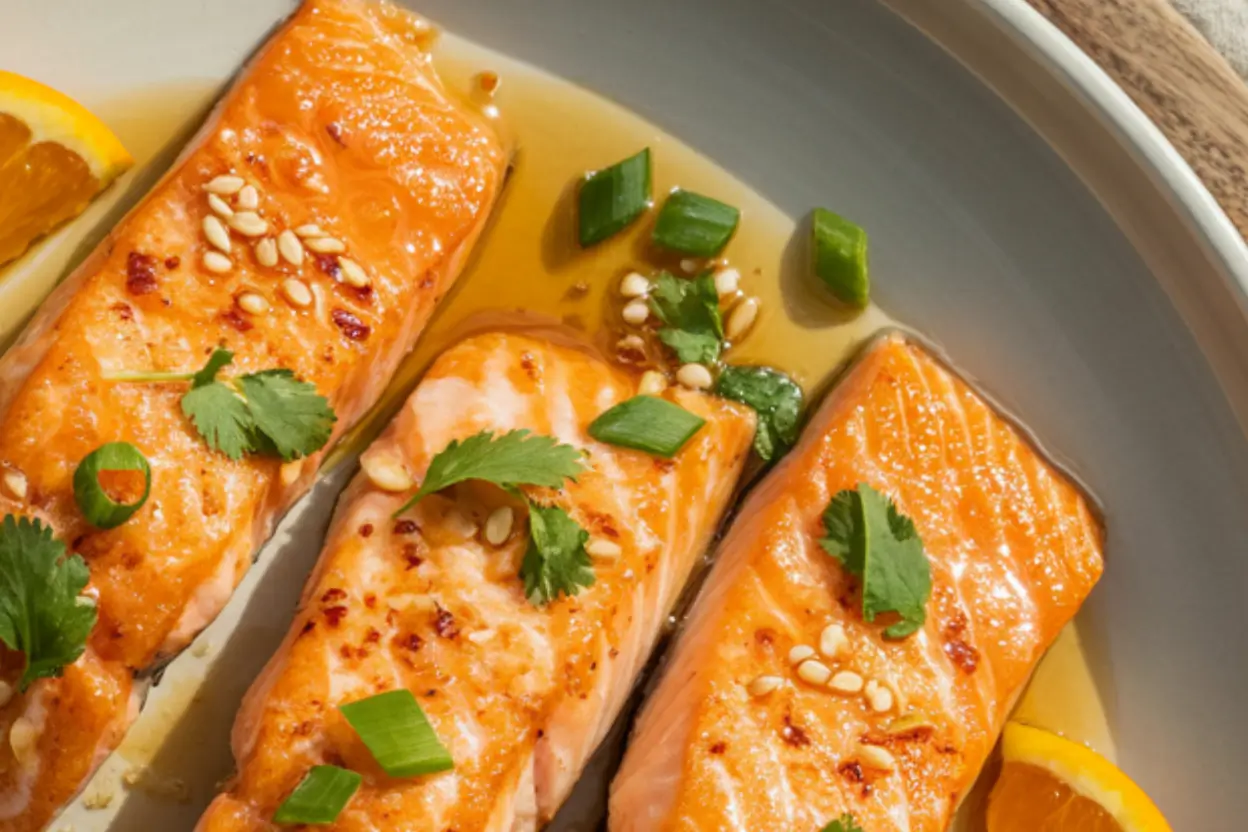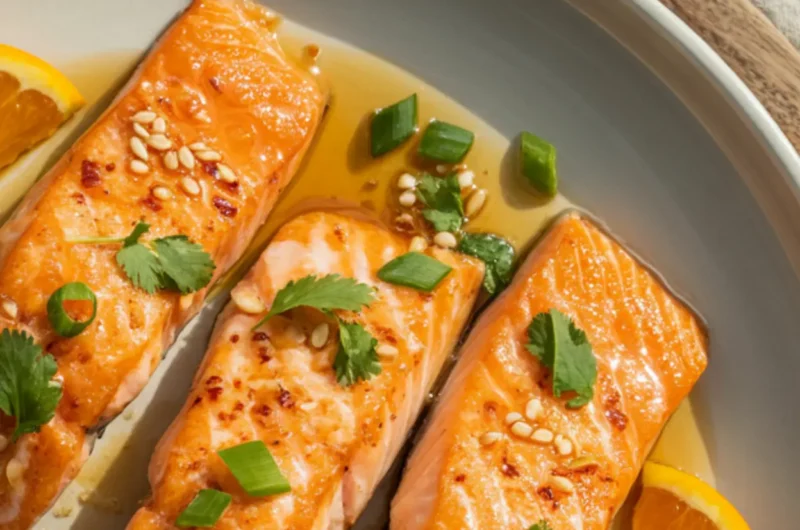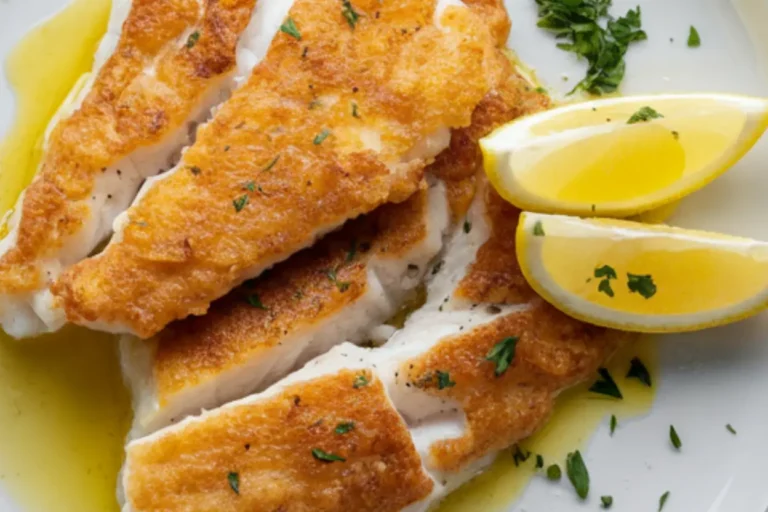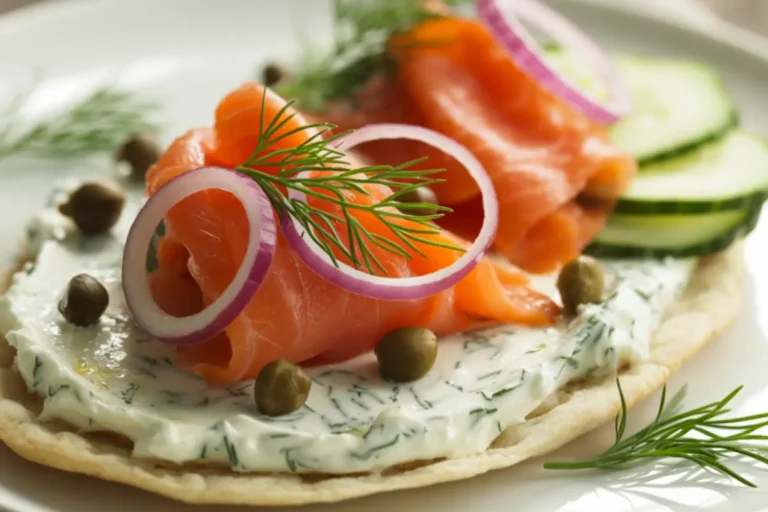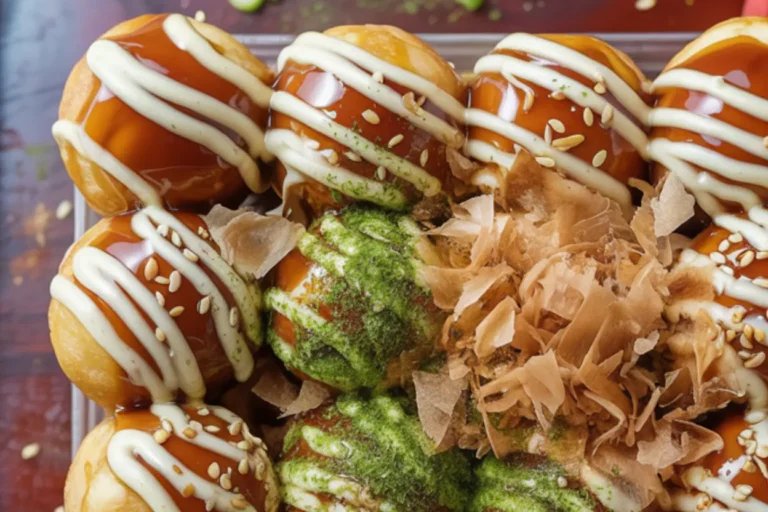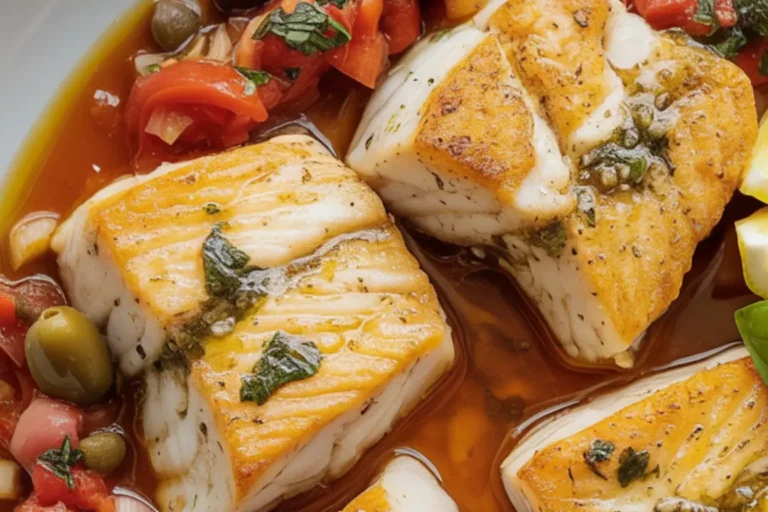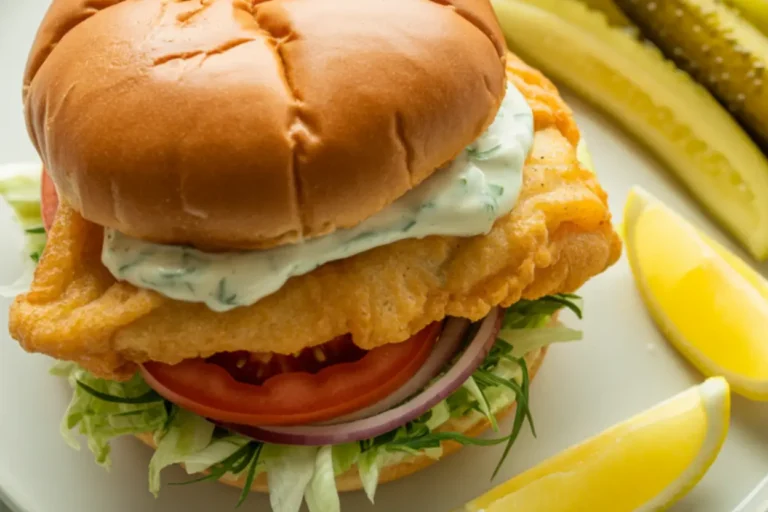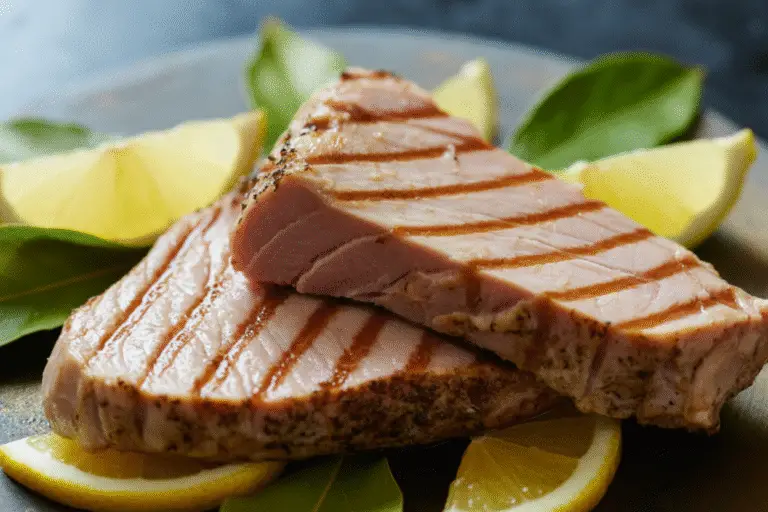Orange Glazed Salmon Recipe: How to Nail the Glaze Every Time
Table of Contents
There’s something magical about the combination of sweet, tangy orange and rich, flaky salmon that creates a dinner worthy of a special occasion, yet simple enough for a weeknight meal. As someone who has perfected this recipe through countless iterations, I’m excited to share my foolproof method for creating the perfect orange glazed salmon that will impress family and friends alike.
Thank you for reading this post, don't forget to subscribe!Whether you’re a seasoned home chef or just beginning your culinary journey, this orange glazed salmon recipe strikes the ideal balance between impressive flavor and straightforward preparation. The secret lies in the perfect glaze consistency and knowing exactly when to apply it to your salmon. Read on to discover how to create this restaurant-quality dish in your own kitchen, with tips and tricks to ensure success every single time.
How to Make Orange Glazed Salmon
Quick Overview
This orange glazed salmon celebrates the natural richness of salmon with a perfectly balanced glaze that’s sweet, tangy, and slightly caramelized. What makes this recipe stand out is how the bright citrus flavors complement the salmon’s natural oils, creating a harmonious dish that feels both indulgent and light at the same time.
The glaze achieves that elusive perfect consistency – thick enough to coat the salmon beautifully without being too syrupy or running off completely. When baked to perfection, the glaze creates a gorgeous lacquered finish that not only looks impressive but also locks in moisture, ensuring every bite of salmon remains tender and juicy.
One of the best features of this orange glazed salmon is its simplicity. From start to finish, you’ll spend about 30 minutes total – 10 minutes of preparation and 20 minutes of cooking time. This makes it ideal for both special occasions and busy weeknights when you want something extraordinary without spending hours in the kitchen.
The Ingredients I Use to Bring My Orange Glazed Salmon to Life
To create this delicious orange glazed salmon, you’ll need:
For the salmon:
- 4 salmon fillets (6 oz each), skin-on preferred
- 1 tablespoon olive oil
- Salt and freshly ground black pepper, to taste
- 1 teaspoon garlic powder
For the orange glaze:
- Zest of 1 large orange (about 1 tablespoon)
- ¾ cup fresh orange juice (approximately 2-3 oranges)
- 3 tablespoons honey
- 2 tablespoons low-sodium soy sauce
- 2 cloves garlic, minced
- 1 tablespoon fresh ginger, grated
- 2 tablespoons brown sugar
- 1 tablespoon rice vinegar
- ½ teaspoon red pepper flakes (optional, for heat)
- 1 tablespoon cornstarch dissolved in 2 tablespoons of water (used as a thickening slurry)
For garnish:
- 2 green onions, thinly sliced
- 1 tablespoon fresh parsley or cilantro, chopped
- Orange slices
- Sesame seeds (optional)
Step-by-Step Instructions
Preparing the Salmon
- Preheat your oven: Set your oven to 400°F (200°C) and allow it to fully preheat while you prepare the rest of the ingredients. Position a rack in the center of the oven.
- Prepare the baking sheet: For easy cleanup, line a rimmed baking sheet with parchment paper or aluminum foil. If using foil, lightly coat it with cooking spray to prevent sticking.
- Prepare the salmon: Pat the salmon fillets dry with paper towels. This crucial step removes excess moisture and helps achieve better browning. Place the salmon fillets skin-side down on the prepared baking sheet, leaving a bit of space between each piece.
- Season the salmon: Brush each fillet with olive oil, then season with salt, pepper, and garlic powder. The light seasoning at this stage creates a foundation of flavor without overwhelming the glaze we’ll add later.
Creating the Perfect Orange Glaze
- Zest and juice the oranges: Using a microplane or fine grater, zest one orange, being careful to only take the orange outer layer and avoid the bitter white pith. Then juice enough oranges to get ¾ cup of fresh juice.
- Combine glaze ingredients: In a medium saucepan, combine the orange juice, orange zest, honey, soy sauce, minced garlic, grated ginger, brown sugar, rice vinegar, and red pepper flakes (if using). Whisk everything together until well combined.
- Simmer the glaze: Set the saucepan over medium heat and bring the mixture to a gentle simmer. Let it cook for around 5 minutes, stirring occasionally, to slightly reduce and blend the flavors together.
- Thicken the glaze: Whisk together cornstarch and water in a small bowl to create a slurry. Slowly pour this into the simmering glaze while whisking constantly. Continue to cook for another 2-3 minutes until the glaze noticeably thickens and coats the back of a spoon. Remove from heat.
- Cool slightly: Allow the glaze to cool for about 3-5 minutes. It will continue to thicken slightly as it cools, reaching the perfect consistency for glazing the salmon.
Cooking the Glazed Salmon
- Apply the first layer of glaze: Use a basting brush to apply a generous layer of the orange glaze to each salmon fillet, reserving about half of the glaze for later.
- Bake the salmon: Place the glazed salmon in the preheated oven and bake for 10 minutes.
- Apply a second layer of glaze: After 10 minutes, remove the salmon from the oven and brush with another layer of the glaze. The first layer will have started to set, allowing this second layer to build up the flavor and create that beautiful lacquered finish.
- Finish baking: Return the salmon to the oven and bake for an additional 5-7 minutes, or until the salmon is cooked to your desired doneness. The salmon is perfectly cooked when it flakes easily with a fork but is still moist in the center. For medium doneness, aim for an internal temperature of 125-130°F (52-54°C).
- Optional broiling step: For an extra caramelized finish, switch the oven to broil for the final 1-2 minutes of cooking time. Watch carefully to prevent burning, as the sugar in the glaze can caramelize quickly.
Serving
- Rest the salmon: Allow the salmon to rest for 3-5 minutes after removing it from the oven. This helps the juices redistribute throughout the fish, ensuring moist, tender results.
- Garnish and serve: Transfer the salmon to serving plates, drizzle with any remaining glaze, and garnish with sliced green onions, fresh herbs, orange slices, and sesame seeds if desired.
What to Serve Orange Glazed Salmon With
This orange glazed salmon pairs beautifully with a variety of side dishes that complement its sweet-savory profile:
Grain Options:
- Fluffy jasmine rice or coconut rice to soak up the delicious glaze
- Quinoa with herbs and a touch of lemon
- Wild rice pilaf with toasted almonds
- Farro or barley with roasted vegetables
Vegetable Sides:
- Steamed or roasted asparagus with a light drizzle of olive oil and lemon
- Stir-fried bok choy or other Asian greens
- Roasted Brussels sprouts with a honey glaze to echo the sweetness in the salmon
- A crisp salad with avocado, cucumber, and a citrus vinaigrette
- Green beans almondine for a classic pairing
For a Complete Meal Experience:
- Start with a light miso soup or Asian-inspired salad
- Serve the orange glazed salmon as your main course with one grain and one vegetable side
- Pair with a chilled white wine such as Sauvignon Blanc or Pinot Grigio to enhance the bright citrus flavors.
- Finish with a light dessert like mango sorbet or green tea ice cream
For a more casual weeknight dinner, simply serve the salmon with steamed rice and a quick vegetable stir-fry for a balanced, nutritious meal that comes together in just 30 minutes.
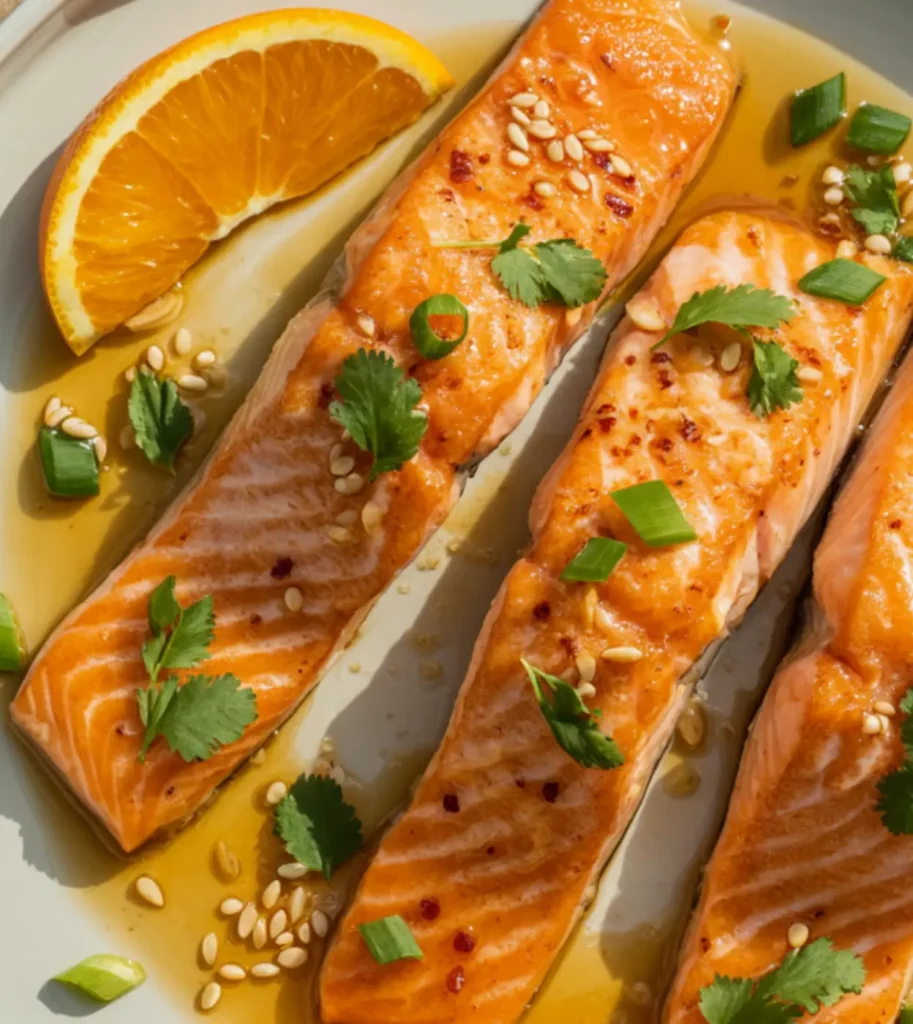
Top Tips for Perfecting Orange Glazed Salmon
After making this recipe countless times, I’ve gathered these professional tips to help you achieve orange glazed salmon perfection:
Selecting the Best Salmon:
- Look for salmon that is bright in color with firm flesh. Wild-caught salmon often has better flavor but can be leaner than farm-raised.
- Center-cut fillets work best as they cook more evenly than tail pieces.
- For the most consistent results, try to select fillets of equal thickness.
- If possible, purchase salmon the day you plan to cook it for optimal freshness.
Glaze Consistency Secrets:
- The key to a perfect glaze is achieving the right thickness. It should coat the back of a spoon but still flow slowly when poured.
- If your glaze becomes too thick after cooling, whisk in a tablespoon of orange juice to thin it.
- If it’s too thin, return it to low heat and reduce for a few more minutes or add a touch more cornstarch slurry.
- Make the glaze up to 3 days ahead and refrigerate to save time on busy evenings.
Cooking Technique Tips:
- Always pat the salmon dry before seasoning to promote better browning and prevent the glaze from sliding off.
- The two-stage glazing process is crucial for building flavor and creating that beautiful finish.
- If your fillets are over 1 inch thick, increase the cooking time by 2–3 minutes.
- For precise doneness, use an instant-read thermometer: aim for 120°F for rare, 125°F for medium-rare, and 130°F for medium.
Common Mistakes to Avoid:
- Overcooking the salmon leads to dry, tough results. Remember that salmon continues cooking for a few minutes after removed from the heat.
- Applying the glaze too early can cause it to burn before the salmon is cooked through.
- Using bottled orange juice instead of fresh, the flavor difference is significant in this recipe.
- Not reducing the glaze enough, resulting in a runny consistency that won’t adhere properly to the salmon.
Ingredient Substitutions:
- No fresh oranges? In a pinch, use high-quality orange juice plus 1 teaspoon of orange extract for the zest flavor.
- Substitute maple syrup for honey if preferred.
- To make it gluten-free, substitute tamari for soy sauce.
- You can substitute brown sugar with coconut sugar for a slightly different flavor profile.
- Rice vinegar can be swapped with apple cider vinegar or white wine vinegar as an alternative.
Flavor Variations:
- Add 1 tablespoon of miso paste to the glaze for an umami boost.
- Include 1 teaspoon of sriracha for a spicy-sweet glaze.
- Stir in 1 tablespoon of bourbon or Grand Marnier into the glaze for an adult version.
- Add 1 teaspoon of five-spice powder for an Asian-inspired twist.
Storing and Reheating Tips
While orange glazed salmon is best enjoyed fresh from the oven, proper storage and reheating can help maintain its delicious flavor for later meals:
Refrigeration:
- Cool the salmon completely before refrigerating (within 2 hours of cooking).
- Store in an airtight container, separating fillets with parchment paper if stacking.
- Properly stored, cooked salmon will last 3-4 days in the refrigerator.
- Store any unused glaze separately in a sealed container for up to 1 week.
Freezing Options:
- While possible to freeze, the texture of cooked salmon does change after freezing and thawing.
- For best results, wrap cooled salmon tightly in plastic wrap, then place in a freezer-safe bag with all air removed.
- Mark the container with the date and use within 2 to 3 months.
- The unused glaze freezes beautifully in ice cube trays for up to 3 months—perfect for future quick meals.
Reheating Methods for Best Results:
- Gentle Oven Reheating (Preferred Method)
- Preheat oven to 275°F (135°C)
- Place the salmon on a baking sheet lined with parchment paper
- Cover loosely with foil to prevent drying
- Heat for 10-15 minutes or until the internal temperature reaches 125°F
- Brush with a little fresh glaze (if available) before serving
- Stovetop Method
- Heat a non-stick skillet over medium-low heat
- Add a teaspoon of olive oil or butter
- Place salmon in the pan skin-side down (if skin is still on)
- Cover and heat for 4-5 minutes until warmed through
- Microwave Method (When Short on Time)
- Place the salmon on a microwave-safe plate
- Place a damp paper towel over the top to help retain moisture.
- Warm in the microwave using 30-second bursts at 50% power until heated through.
- Take care not to overheat, as this can cause the salmon to dry out.
Creative Leftover Ideas:
- Break up cold leftover salmon into flakes and toss it into a salad with mixed greens, avocado, and citrus segments.
- Use in rice paper rolls with cucumber, avocado, and fresh herbs
- Make salmon cakes by combining flaked salmon with breadcrumbs, egg, and herbs
- Add to pasta with a light cream sauce and peas
- Create a salmon breakfast hash with potatoes, bell peppers, and a poached egg on top
With these comprehensive instructions and professional tips, you’re now fully equipped to create perfect orange glazed salmon every time. The combination of bright citrus, sweet honey, and savory soy sauce creates a glaze that transforms simple salmon into an extraordinary meal worthy of any occasion. Whether you’re cooking for a special celebration or simply elevating your weeknight dinner routine, this orange glazed salmon is sure to become a favorite in your recipe collection.
click here to follow me on pinterest
Orange Glazed Salmon Recipe: How to Nail the Glaze Every Time
Cuisine: Asian-inspired / FusionDifficulty: Easy to Moderate4
servings15
minutes18
minutes450-500
kcalThis vibrant and flavorful Orange Glazed Salmon pairs tender, pan-seared fillets with a sticky-sweet citrus glaze made from fresh orange juice, honey, soy sauce, and aromatic ginger and garlic. It’s a colorful and satisfying dish that balances sweetness, acidity, and umami, finished with fresh herbs and optional sesame seeds for added texture and freshness.
Ingredients
4 salmon fillets (6 oz each), skin-on preferred
1 tablespoon olive oil
Salt and freshly ground black pepper, to taste
1 teaspoon garlic powder
Zest of 1 large orange (about 1 tablespoon)
¾ cup fresh orange juice (approximately 2-3 oranges)
3 tablespoons honey
2 tablespoons low-sodium soy sauce
2 cloves garlic, minced
1 tablespoon fresh ginger, grated
2 tablespoons brown sugar
1 tablespoon rice vinegar
½ teaspoon red pepper flakes (optional, for heat)
1 tablespoon cornstarch dissolved in 2 tablespoons of water (used as a thickening slurry)
2 green onions, thinly sliced
1 tablespoon fresh parsley or cilantro, chopped
Orange slices
Sesame seeds (optional)
Instructions
- Prepare the Salmon
– Preheat oven to 400°F (200°C) and line a baking sheet with foil or parchment (spray foil lightly if using).
– Pat the salmon fillets dry and place them skin-side down on the sheet.
– Brush with olive oil and season with salt, pepper, and garlic powder. - Make the Orange Glaze
– Zest and juice oranges to get 1 tbsp zest and ¾ cup juice.
– In a saucepan, combine: orange juice & zest, honey, soy sauce, garlic, ginger, brown sugar, vinegar, and red pepper flakes.
– Simmer for 5 minutes, then whisk in a cornstarch slurry to thicken. Cook 2–3 more minutes, then let cool slightly. - Bake and Glaze the Salmon
– Brush salmon fillets with half the glaze and bake for 10 minutes.
– Remove from oven, apply more glaze, and bake an additional 5–7 minutes, or until salmon is flaky and reaches 125–130°F (52–54°C) internally.
– Optional: Broil for 1–2 minutes for a caramelized finish. - Serve and Garnish
– Let salmon rest 3–5 minutes after baking.
– Serve with extra glaze and garnish with green onions, herbs, orange slices, and sesame seeds if desired.
Notes
- Using fresh orange juice is key for achieving the bright, natural sweetness in the glaze. Skin-on salmon helps the fillets hold together during cooking and provides a crisp texture if pan-seared properly. This dish pairs beautifully with jasmine rice, sautéed greens, or a simple citrus salad. If you want to make it gluten-free, simply substitute soy sauce with tamari.

